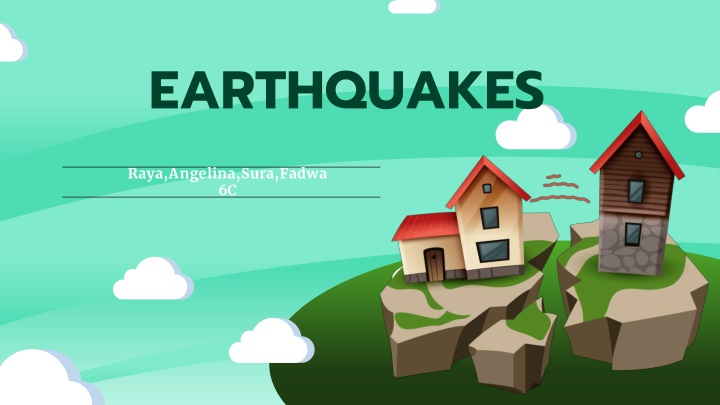
Earthquakes: Causes, Effects, and Solutions
Explore the causes, effects, and solutions related to earthquakes, including how tectonic plates movement triggers seismic activities, the various impacts on the environment, and mitigation strategies to enhance safety and preparedness. Learn about the detection methods, intensity factors, and the overall significance of earthquakes in shaping our natural world.
Download Presentation

Please find below an Image/Link to download the presentation.
The content on the website is provided AS IS for your information and personal use only. It may not be sold, licensed, or shared on other websites without obtaining consent from the author. If you encounter any issues during the download, it is possible that the publisher has removed the file from their server.
You are allowed to download the files provided on this website for personal or commercial use, subject to the condition that they are used lawfully. All files are the property of their respective owners.
The content on the website is provided AS IS for your information and personal use only. It may not be sold, licensed, or shared on other websites without obtaining consent from the author.
E N D
Presentation Transcript
EARTHQUAKES Raya,Angelina,Sura,Fadwa 6C
INTRODUCTION!! Introduction : : An earthquake is a weak to violent shaking of the ground produced by the sudden movement of rock materials below the earth's surface.
WHAT MAKES EARTHQUAKES? What makes earthquakes? : : Earthquakes happen when tectonic plates move against each other suddenly. Because of friction, the plates smoothly, Sometimes they get stuck. Huge forces build up, Eventually, The two plates overcome the frictional force .The plates slip suddenly there is an Earthquake. cannot slide
EFFECTS OF EARTHQUAKES Effects of EarthQuakes: Ground shaking Surface faulting Ground failure Tsunamis Some are more common than others
WHAT IS AN EARTHQUAKE? Intensity : The distance away from the epicenter. The depth of the earthquake. The population density of the area affected by the earthquake. The local geology of the area. Frequency : The higher the frequency, the faster the energy from the earthquake attenuates, or dissipates, with distance.
HOW TO DETECT EARTHQUAKES? How to detect earthquakes? : Seismometers allow us to detect and measure earthquakes by converting vibrations due to seismic waves into electrical signals, which we can then display as seismograms on a computer screen.
THE IMPACT OF EARTHQUAKES ON THE NATURAL ENVIRONMENT The impact of EarthQuakes on the natural environment: Earthquakes can result in the ground shaking, soil liquefaction, landslides, fissures, avalanches, fires and tsunamis.
WHAT ARE THE SOLUTIONS AND THE CONCLUSION? Solutions : Identifying hazards, building safer structures, and providing education on earthquake safety Conclusion: Earthquakes shake the ground surface, can cause buildings to collapse, disrupt transport and services, and can cause fires.
